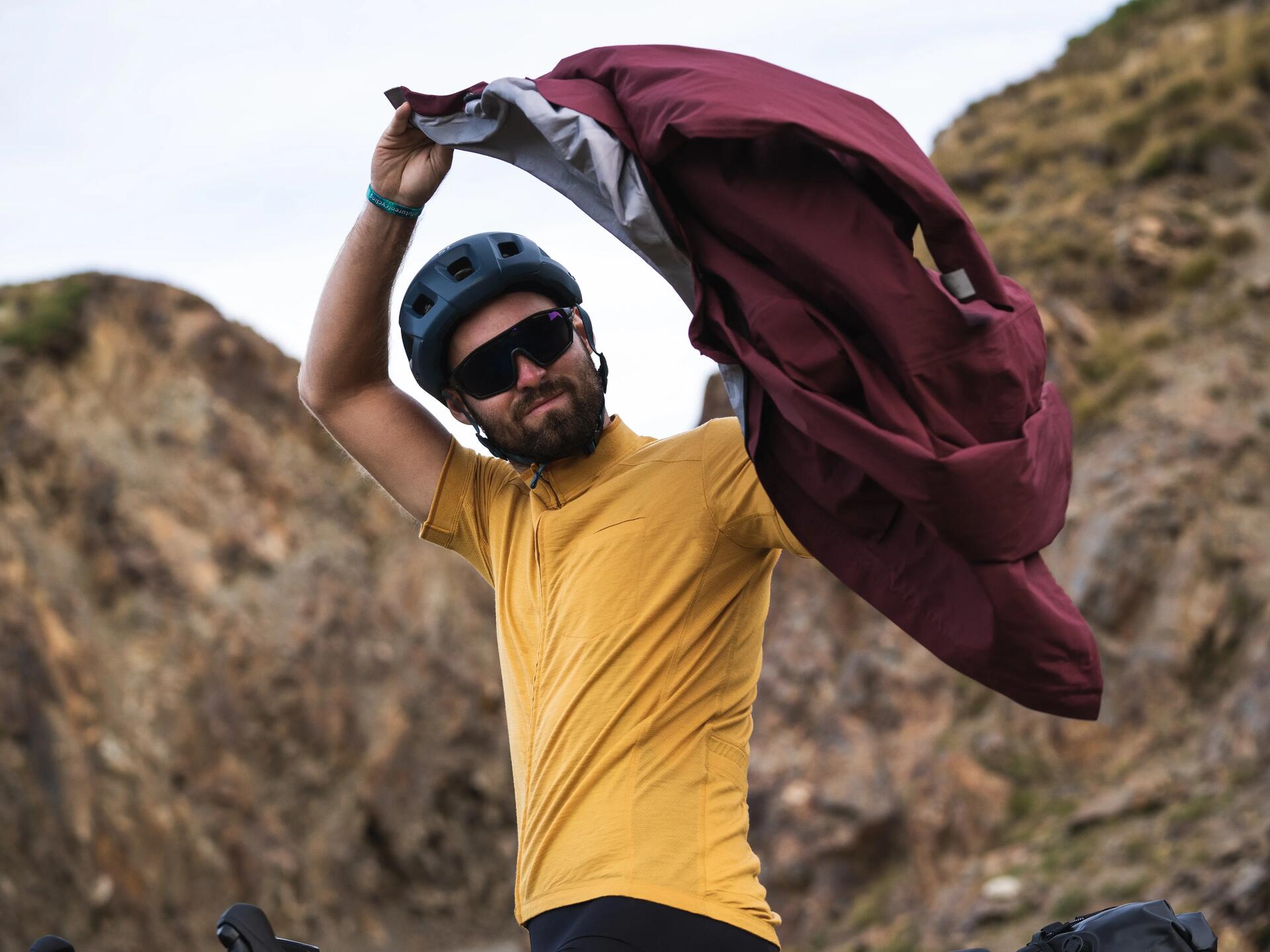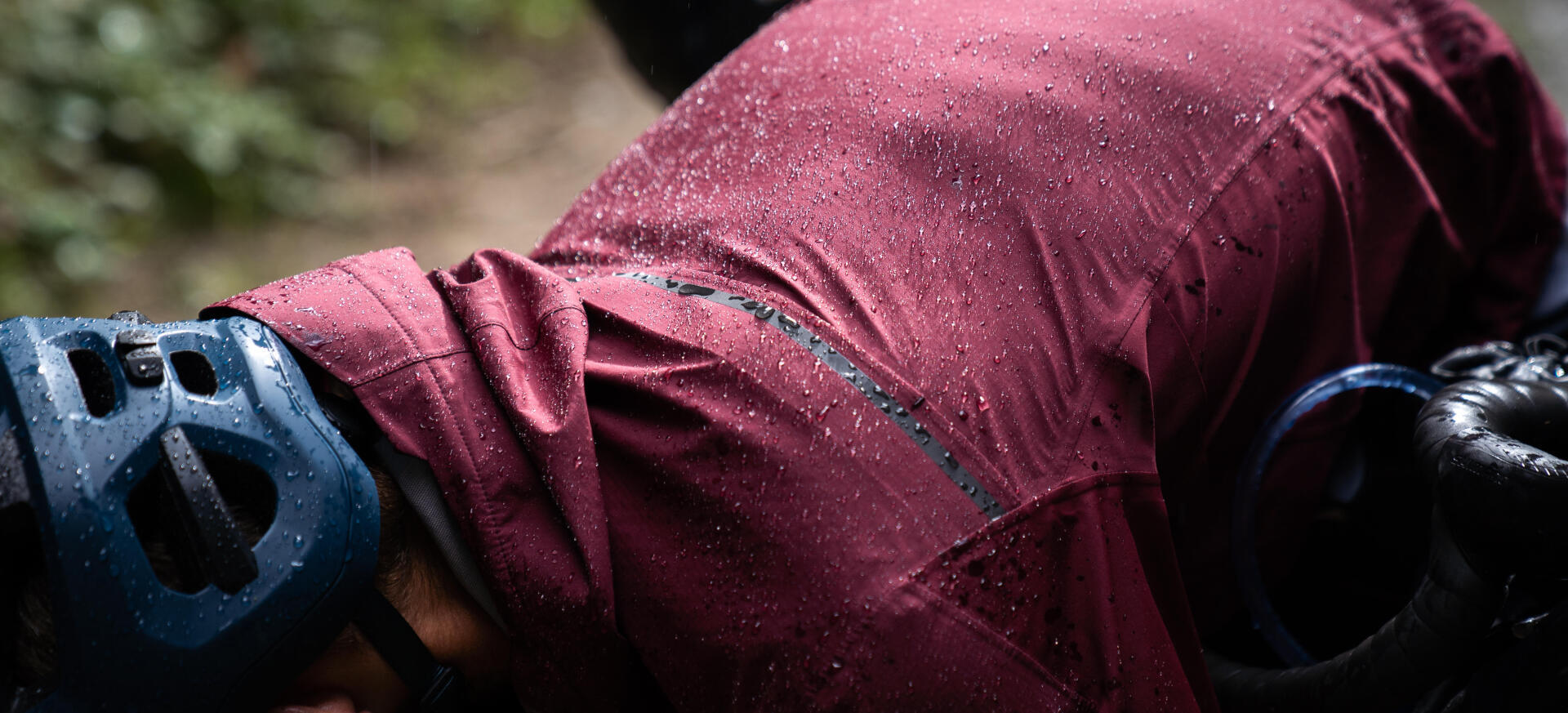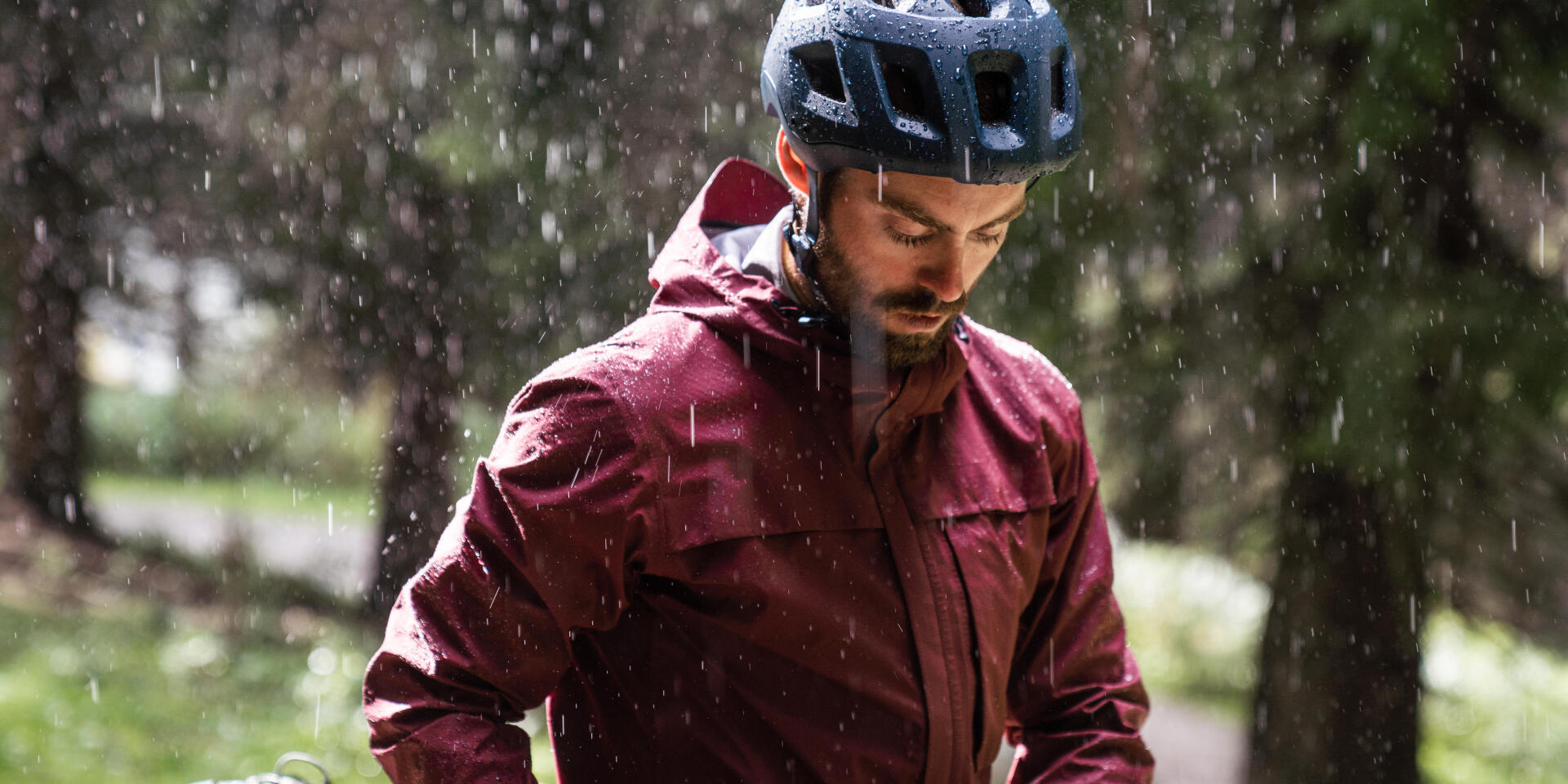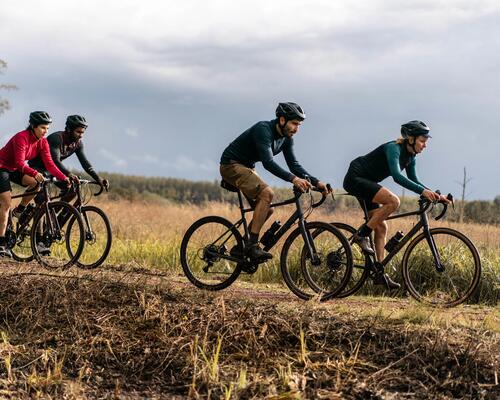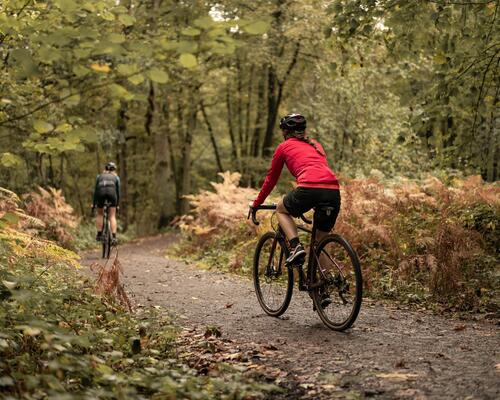3. Avoid getting wet at all costs
Everything that I've said works perfectly well, provided that you're dry. The priority for gravel riding is therefore to avoid getting wet. Otherwise, the entire system falls down.
There are 3 ways that you end up wet:
From above, due to the rain and snow. It's very easy to wear the right things to stop this happening. I do so by simply wearing a waterproof third layer, which protects my two inner layers. It has a hood, which also keeps my hat dry. On my lower half, if it starts raining, I'll pull on my waterproof trousers and overshoes. And if the rain is particularly heavy, I can also add waterproof overgloves.
From inside, i.e. from my body overheating and sweating. This is mainly a problem on climbs. Here, there's no miracle solution. I've simply learned to pace myself so that I produce enough heat to stay warm, but not so much that I end up soaked in sweat. However, I still have a handy tip: take advantage of the vents on your jacket and waterproof trousers, which let the cold air come in and slightly cool your inner layer.
From below. This is the worst, when the ground is totally covered in water and your tyre is throwing water all over the place. Not only is the ground more slippery, which makes gravel riding particularly technical, but the water will gradually work its way into your shoes via capillary action, leaving them sopping. It's even worse with gravel riding than road cycling because your knobby tyres pick up so much more water off the ground. That's the down side. But there are three things you can do:
- Wear waterproof overshoes as I've already mentioned, but you need to make sure your waterproof trousers go over the top of your overshoes. If not, the water can run down your trousers and soak into your shoes.
- I also use plastic bags, which I put over my socks, inside my shoes, as a back-up waterproof layer that also has the benefit of being windproof. Similarly, you can stuff kitchen foil into the ends of your shoes, over your socks, which keeps your toes much warmer. While this solution isn't waterproof, it's still compatible with all of the other solutions, which are.
- Fit your bike with mudguards to hugely limit the amount of water that the tyre kicks up onto your back, shoes and trousers. Make sure to choose a mudguard that's far enough away from your tyre that you don't get a load of mud trapped under it, as this would stop your wheel from turning. You should also check whether your mudguard is compatible with your pannier rack, if you have one.

